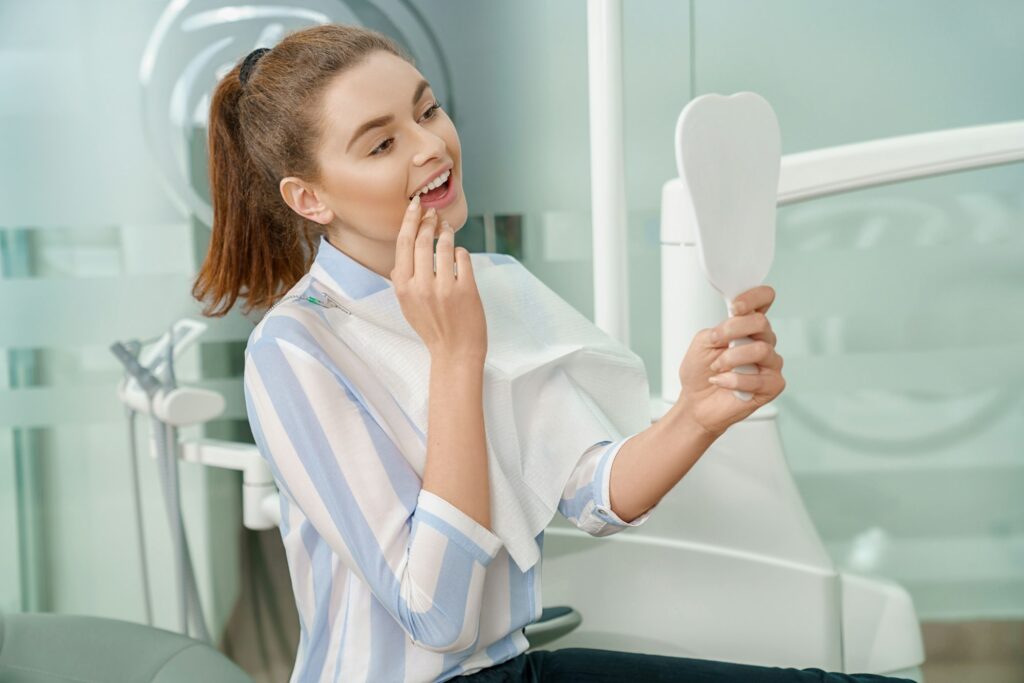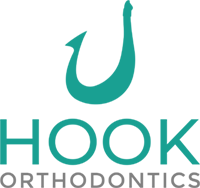Home Care
The Hook Orthodontics team goes above and beyond to make sure that you, as a patient, are satisfied with the orthodontic work that we perform. While we do whatever we can to improve your smile, once you walk out of our offices, the responsibility to maintain your improved oral health falls squarely on you. Don’t worry; we have some easy-to-follow tips to ensure that your teeth remain healthy for years to come.

The Benefits of Home Care: Brushing
There are many benefits that result from brushing your teeth properly. Some of the benefits of proper brushing include but are not limited to:- Tooth decay can be lessened and even prevented as a result of brushing.
- Brushing eliminates bad breath, so more people will enjoy talking with you.
- Proper brushing removes plaque buildup. Plaque is known to cause tooth decay and gum disease.
- You’ll save money on unnecessary dental procedures because of your preventive care.
- Brushing also lessens the chances of stroke, heart disease, dementia, pneumonia, and COPD, among other ailments.
- Studies performed with pregnant women showed that good oral hygiene improves the prenatal health of babies.
- Brushing signals to your brain that mealtime is over, so it helps you to maintain a healthy weight.
Tips for Healthy Brushing
Now that you know some of the many benefits of brushing your teeth, here are some tips to help you brush:- Toothbrushes come in different sizes and shapes, so find the toothbrush that is comfortable for you.
- Make sure you look for a soft bristle toothbrush and that the shape and size of your toothbrush easily fit into your mouth. It should provide you with enough room to easily reach all the different areas.
- It is essential to brush your teeth twice a day for at least two minutes each time.
- If you have a new toothbrush and the bristles are quick to fray, then there is a chance you could be brushing too hard. It is a good practice to change out your toothbrush every 3-4 months.
- The toothpaste you use should be an ADA-accepted toothpaste. This is important to ensure the right amount of fluoride is in your toothpaste.
The Benefits of Home Care: Flossing
If most people were honest, they would admit that they rarely, if ever, floss. In fact, a large number of Americans have experienced periodontitis, which is an infection in the tissue and bones that surround and support teeth. One of the easiest ways to prevent periodontitis is to floss routinely. Some of the other benefits of flossing regularly also include:- Flossing cleans out the spaces in between teeth where bacteria often grows. So, more flossing means less harmful bacteria in your mouth.
- Proper flossing techniques prevent bad breath.
- Your teeth look whiter and cleaner when you floss.
- Flossing also leads to less plaque, which causes cavities, tooth decay, and gum disease.
- Your toothbrush can only reach so far. Flossing helps you to eliminate food and bacteria that brushing can’t get to.
Tips for Healthy Flossing
Now that you understand how important flossing is, here are some tips to help you floss the right way:- Despite what you may have learned, flossing before you brush is more valuable than flossing afterward. If you floss before you brush, the amount of plaque is reduced, so brushing becomes more effective.
- Dental floss comes in a wide variety of flavors and types. Try a few different kinds to see what works best for you, depending on your needs. For example, thinner floss may work better for people with lots of dental work, while thicker floss may work better for people with many spaces between their teeth.
- Each piece of floss that you use should be between eighteen to twenty-four inches so that you have enough to reach your back teeth.
- Make sure that you hold the floss tightly with your thumb and first finger. As you floss, wind the used floss up while letting some clean floss unwind from your other hand. This way, you’re always using clean floss.
- Make sure to floss between and around each tooth.
- Slide the floss up and down and around all tooth surfaces, even the hard-to-reach back molars.
- Avoid snapping the floss between teeth, though. Jerky, rough movements can cause the gums to bleed.
- Consider purchasing a water flosser. Some people find that this solution is easier to use than traditional flossing.
